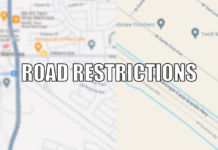
This story was originally Published on: Dec 28, 2005.
The City of Maricopa is the fastest growing community in Arizona and is in a state of hyper growth. In 2000 the population was 1,482; in 2004 it was 4,998. The city estimates that there are approximately 24,000 residents presently, with the population anticipated to be 106,000 by 2010 and 190,000 in 2020. Since March of this year, the city has issued more than 500 building permits each month. More than 80,000 homes have been approved within the city limits.
With Maricopa’s growth comes perhaps its biggest infrastructure problem – transportation. The city hired Lima & Associates to compile general transportation information, the Small Area Transportation (SAT) Study, between November of last year and May 2005. The purpose of this study was to aid the city in planning and implementing a transportation system within the constraints of two major washes, the Union Pacific railway tracks and possible access through two Native American communal lands.
Public open houses or stakeholders meetings were held on four different occasions between December 2004 and April 2005. Over 90% of the community members participating cited traffic congestion as the number one problem in the area. Regional access, the railroad and emergency access were each cited as major problems by at least 50% of those in attendance.
Some areas of concern are:
Washes
Both the Santa Cruz and Santa Rosa Washes provide barriers to circulation due to the necessity of bridging them in many areas.
Alternative Transportation
Presently there are no equestrian, bicycle or walking trails within the city limits. The closest bus line is in Casa Grande, and the nearest taxi companies are in Casa Grande and Chandler. Seniors and the handicapped have no special needs transportation available. One local shuttle provides an on-call service from the Amtrak station to Phoenix.
Railway Crossings
Because the Union Pacific tracks run parallel to the Maricopa-Casa Grande Highway, there are many crossings where accidents may occur. The railroad, as well as the General Plan, report that there are 55 freight trains through Maricopa daily with the number expected to rise to 70 per day by 2010 and 80 by 2013. Since SR 347 crosses the tracks just south of the Maricopa-Casa Grande Highway and more and more developments are being built south of the tracks, traffic congestion is expected to increase greatly. The need for a grade-separated crossing, an underpass or overpass, is critical.

In addition, Amtrak’s Orlando to Los Angeles Sunset Limited stops in Maricopa three times per week in each direction. The train, which is longer than the platform, must stop and start several times for passengers, blocking traffic on SR347 each time for 15-20 minutes. The train generally leaves Maricopa just before midnight heading east while the westbound train leaves at approximately 2:30 a.m. – if they are running on schedule.
Commuter Traffic
According to the Arizona Department of Commerce, in June of 2004 there were 2,400 jobs in Maricopa, almost 40% less than the state and national averages. Service and governmental positions accounted for 57.8% of all employment. Although more jobs are available in the community all the time, a large number of Maricopa residents commute to work each day.
If population projections are accurate, and there are 190,000 residents in Maricopa by 2020, the estimated daily vehicle trips generated by residents would be more than 690,000. Presently, according to the Arizona Department of Transportation, the average daily traffic volume is 13,650 vehicles per day on SR 347, 2,450 on SR 238 and 5,800 on the Maricopa-Casa Grande Highway.
Residents are already complaining about traffic during the morning and evening commutes. Ultimately, SR 347 will have to be widened to at least six lanes. Without new regional roadway connections, SR 347 could have average daily traffic volumes that could exceed 80,000 vehicles.
Housing Developments
Many of the developments have no system whereby the developments’ streets flow freely into a larger collector roadway. Often the entrances to the developments are offset from one development to the next, creating traffic and signalization issues.
Paved Roads
Many of the roads within the Maricopa city limits are not paved.
As is evident from the information gathered for the SAT study, the transportation issue is a challenging one for the City of Maricopa. The city’s goal is to provide a safe and efficient system of roads, arterials, collectors and freeways for all modes of transportation used by area residents and businesses. The fact that this system has to be constructed in an already developed community makes the planning and implementation even more difficult.
City of Maricopa facing challenging transportation issues – InMaricopa




![City gave new manager big low-interest home loan City Manager Ben Bitter speaks during a Chamber of Commerce event at Global Water Resources on April 11, 2024. Bitter discussed the current state of economic development in Maricopa, as well as hinting at lowering property tax rates again. [Monica D. Spencer]](https://www.inmaricopa.com/wp-content/uploads/2024/04/spencer-041124-ben-bitter-chamber-property-taxes-web-218x150.jpg)

![3 things to know about the new city budget Vice Mayor Amber Liermann and Councilmember Eric Goettl review parts of the city's 2024 operational budget with Mayor Nancy Smith on April 24, 2024. [Monica D. Spencer]](https://www.inmaricopa.com/wp-content/uploads/2024/04/spencer-042424-preliminary-budget-meeting-web-218x150.jpg)





![Alleged car thief released without charges Phoenix police stop a stolen vehicle on April 20, 2024. [Facebook]](https://www.inmaricopa.com/wp-content/uploads/2024/04/IMG_5040-218x150.jpg)




![City gave new manager big low-interest home loan City Manager Ben Bitter speaks during a Chamber of Commerce event at Global Water Resources on April 11, 2024. Bitter discussed the current state of economic development in Maricopa, as well as hinting at lowering property tax rates again. [Monica D. Spencer]](https://www.inmaricopa.com/wp-content/uploads/2024/04/spencer-041124-ben-bitter-chamber-property-taxes-web-100x70.jpg)
Obviously the mayor and the volunteer P & Z missed reading this one….priceless.
What’s obvious here? The economy and housing markets crashed right after the article. Things change in real world situations, as opposed to your opinions. Perhaps change NAME to AZTONY!